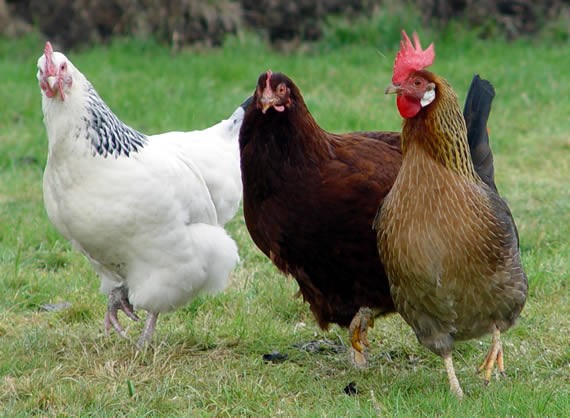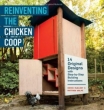An Introduction to Poultry Keeping
We once read somewhere that poultry is usually the first “livestock” enterprise that budding smallholders are likely to undertake. It was certainly ours, and it is easy to understand why many people get so hooked on hens. Once you've tasted the saffron yellow yolk and the silky, creamy white of one of your own free-range hens' eggs, you'll never be content with anything else - plus hens bring a whole new dimension to your garden - movement, sound and colour!
Given the huge range of breeds, there is something to appeal to everyone; however, each hen is an individual and some can be real characters. If handled young, they can be good pets for children. It is unlikely that keeping poultry on a small-scale will save you money and it’s even less likely that you will make money. However, you'll find that your rewards are seeing your hens happy and thriving and, most of all, eating fresher eggs and maybe tastier chicken than you'll find in any supermarket.
Here we offer some encouragement to those considering keeping hens of their own for egg production or for the table. If you decide that poultry keeping isn’t for you, please buy your eggs from free-range hens, preferably from a local supplier. The life of a caged or barn hen is pretty miserable and consumers can do their bit to bring about change in the poultry industry.
 Light Sussex, Rhode Island Red and Brown Leghorn
Light Sussex, Rhode Island Red and Brown Leghorn
While it is impossible to count accurately, it is estimated that there are about 11 billion chickens on the planet; they are all, however, derived from the Red Jungle Fowl Gallus gallus, of southern and south-eastern Asia.
Man probably started to domesticate the Red Jungle Fowl about ten thousand years ago but only in the last 200 years or so, have they been selectively bred for eggs and meat and only since the mid-nineteenth century has breeding for exhibition really became popular.
Poultry keeping was revolutionised after the Second World War. In 1945 less than one per cent of laying hens were caged, but by 1986 ninety three per cent of the national flock was kept in cages. Battery cages in the UK are now being phased out as more consumers have become opposed to the welfare implications.
Free-range eggs are becoming more popular and now nearly one in four British hens is free-range. Intensification for meat production has become equally extreme. Pre-war, it took 126 days to produce a 4lb bird, it now takes 42 days. There are also welfare concerns about broiler chickens and many people prefer to buy birds that have been reared in less intensive conditions.
Many people have decided that quality, welfare and traceability are of the utmost importance, and prefer either to buy their meat from places such as farmers markets or to produce their own. If you are one of them, we hope that the following pages will help you.

About Rosemary Champion
Rosemary lives on a 12 acre smallholding in Angus, in the east of Scotland, where she keeps Ryeland Sheep, Shetland cattle and assorted poultry. She was destined to be a smallholder from an early age.
Further Reading
 Chicken & Eggs: River Cottage Handbook No.11 Mark Diacono |  Storey's Guide to Raising Chickens Gail Damerow |  A Beginners Guide to Caring for Ex-Batts Jo Barlow |  Reinventing the Chicken Coop Matthew Wolpe |  Chickens: The Essential Guide to Choosing and Keeping Happy, Healthy Hens Suzie Baldwin |
Smallholding shop
When you click links below and make a purchase, this may result in this site earning a commission from eBay.

Hentastic Foraging Feast 1KG Garlic, Ginger & Mixed Herbs
Foraging pellets for… from £3.95 + p&p

No. 6 Poultry Fountain Drinker 9li
Eltex Poultry Fountain… from £39.44 + p&p

Poultry Shield Ready-to-use
Poultry shield is a well… from £4.67 + p&p

Sterilising concentrate 1Lt
… from £17.87 + p&p
















